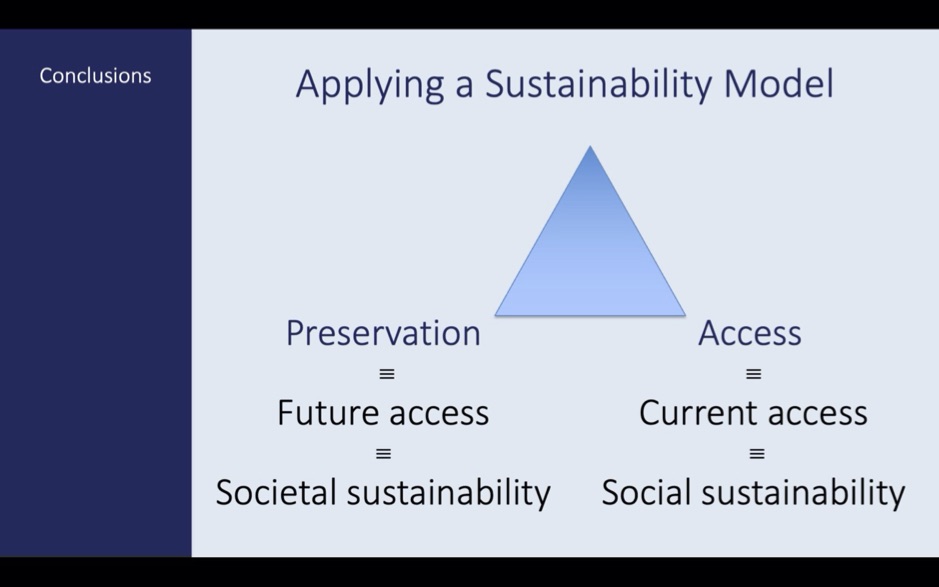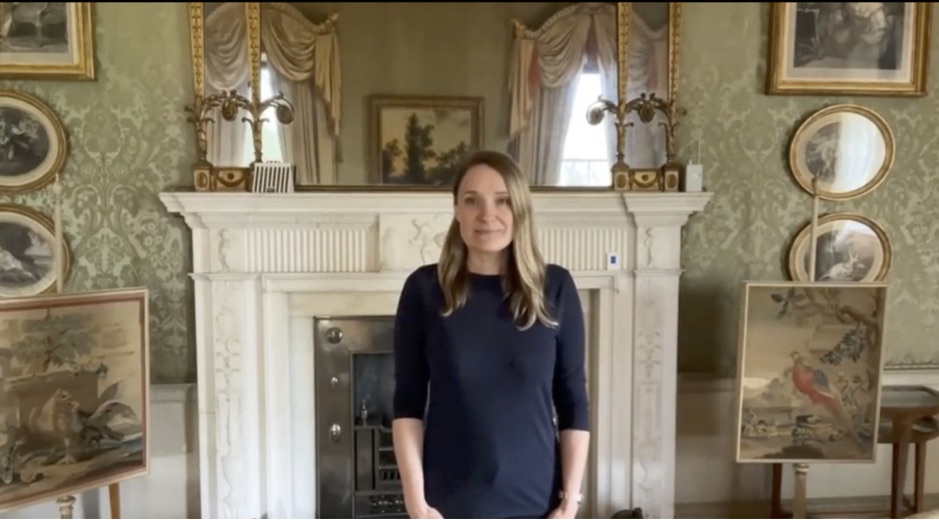Session 10: Sustainability
Submitted by Kate Smith on 09 Sep 2022

By Annabelle Williams
In Session 10, we explored three presentations discussing the role of sustainability not only in conservation but equally in wider heritage environments.
From 'killjoys' to facilitators of access
David Saunders began our session by exploring the relationship between Sustainability, Preservation and Access. He discussed the shift in roles for conservators from “killjoys or lux police” focused primarily on the preservation of collections to our current role as facilitators of access to collections. Framed using the five Pillars of Sustainability – Environmental, Social, Societal, Economic and Operational - he provided a wholistic assessment of sustainability within the GLAM-sector and the way in which decision-making outcomes affect each of the pillars. What I found particularly interesting in this presentation was the way in which David linked the Pillars of Sustainability to the concepts of preserving collections and providing access. He stated that preservation of collections ensures future access, therefore falling under the societal sustainability pillar, as it encourages the long-term continuity of cultures across generations. Whereas, current accessibility of collections leans into social sustainability, at a small community or individual level in the shorter-term timeframe. Striking the balance between preservation and access is therefore essential when considering a wholistic view of sustainable museum practice.

Film crews at historic locations
Claire Fry, Charlotte Tomlin, Victoria Marsland and Anna Barnes explored sustainability when working with filming crews in historic locations. The Covid-19 pandemic led to closures and severely reduced revenues for Historic Houses throughout the UK, and therefore the need to welcome filming crews onto historic sets is proving essential in the longevity of preserving these locations. The team from Spencer & Fry, explored the many roles of conservators when working with the film industry, including: advocating for conservation within the industry, liaising with filming crews, managing lighting, set construction, props, food, drinks, and the use of animals Conservators have a larger role in this industry than solely preventive conservation and need to consider both the safety parameters on location and protection of the historic locations. They are not only able to explore the best way to spill a bucket of blood on set without damaging the historic flooring, but also are promoting sustainable practice. They are encouraging the use of reusable materials such as protective flooring; more energy-efficient solar-powered generators; LED-lights and cotton tape, which equally are beneficial to the collections and Historic Houses as well as the environment. What resonated with me throughout this presentation was the ever-expanding role of conservators and the diverse range of work environments, expertise and soft-skills required within our field.

Tools for implementing sustainability in education systems
Justine Weubold presented her research from UCLA and the Getty Program about how to implement Sustainability practices into Cultural Heritage education systems. Considering the sustainable practices in other research models, including Sustainability in Conservation, the Our Ancestors Knew Best Project, Ki Culture, and the Sustainability Tools and Cultural Heritage project, have developed conclusions surrounding implementing sustainability into educational systems. They have focused on Systems Thinking; Future Thinking – by systematically working backwards to create the future intended for the program; and Multiple Perspectives - to integrate Indigenous voices by the way of Two-Eyed Seeing. Most surveyed institutions indicated interest and intent to integrate sustainable practice, with barriers to be addressed in the next phase of the project.
Q&As
The Q&A session was particularly relevant in discussing the future of our field. The presenters used different models of sustainability including the three-tiered or five-tiered Sustainability Pillars and the United Nations Sustainable Development Goals to address the broader outcomes within the heritage sector. While their methodologies varied, they agreed that for progression within our field, we require unity behind shared sustainability goals. When asked by our session-chair, Jane Henderson, for a concluding wish to improve sustainability within the sector, if they had a ‘magic sustainability wand’, the Panel of speakers concluded the following: that people in influential positions need to get on board with directives being driven by individuals; better planning is required to reduce waste from travel of personnel and temporary exhibitions; and finally, people need to look above their immediate horizon and shift the focus from the now to the long-term.
AUTHOR BYLINE
Annabelle Williams
Collections Manager, Benalla Art Gallery